Digital Camera World Verdict
If you're looking for a lightweight, affordable alternative to the standard 24-70mm f/2.8, the Sigma 28-70mm f/2.8 DG DN | C ticks all the boxes. It's not quite as wide at the wide end, but if you can get by without that extra 4mm the Sigma is an impressive bit of kit considering the price. The lens feels well built, the focus and zoom rings are smooth, and you can rotate from 28-70mm in one fell swoop. The one downside is that it's not fully weather-sealed, so we wouldn't recommend using it in pouring rain.
Pros
- +
f/2.8 maximum aperture
- +
Good value for a fast standard zoom
- +
Lightweight
Cons
- -
Not fully weather sealed
- -
Missing 4mm from wide-angle
- -
Corners not so sharp
Why you can trust Digital Camera World
For many photographers, a 24-70mm lens is an essential bit of kit, but an f/2.8 variant often comes with a hefty price tag. Even the Sigma 24-70mm f/2.8 Art lens, which is a lot cheaper than the Sony G Master, is still well over a grand. The release of the Sigma 28-70mm f/2.8 DG DN suddenly made this sought-after zoom range so much more affordable.
Not only does it cost a lot less than the best standard zoom lenses, but it's much smaller and lighter, too, making it ideal for traveling.
The Sigma 28-70mm f/2.8 DG DN comes in Sony E Mount and Leica L mount, and is a great addition to your Sony A7 III or Panasonic S5. It's perfect for videographers or photographers who need something more compact but still want that fast constant aperture.
While the Sigma 28-70mm f/2.8 DG DN may not be quite as wide as the a standard 24-70mm lens, you may find that you don't really don't miss the extra 4mm – and for the amount it knocks off the price, many people will be happy to live without it.
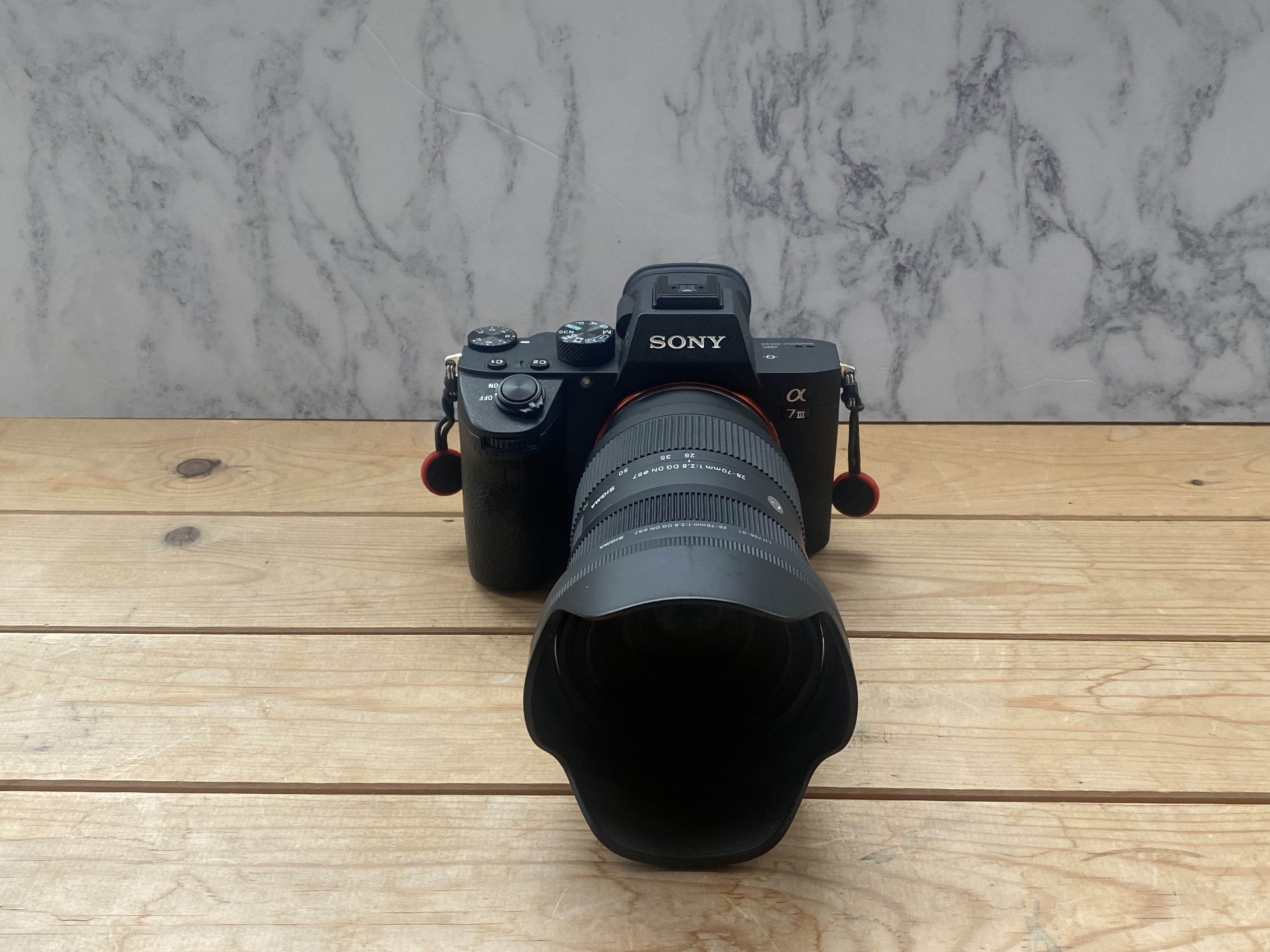
Sigma 28-70mm f/2.8 DG DN: Specifications
Mount: Sony E (tested), Leica L
Full frame: Yes
Image stabilization: No
Autofocus: Yes
Lens construction: 16 elements in 12 groups
Angle of view: 75.4 - 34.3°
Diaphragm blades: 9
Minimum aperture: f/22
Minimum focusing distance: 0.19m
Filter size: 58mm
Dimensions: 72.2x101.5mm
Weight: 470g
Sigma 28-70mm f/2.8 DG DN: Key features
The biggest reason for investing in the Sigma 28-70mm f/2.8 is that it's a much smaller, lighter and cheaper alternative to native-branded lenses. It's still capable of producing really high-quality images with sharp in-focus areas and soft, blurred, out-of-focus areas. Unlike some of the more expensive brands it doesn't have any lens stabilization, but if you're shooting on something like the Sony A7R IV the in-body stabilization makes up for it.
For such a small lens, its optical construction is quite impressive. It's made up of 16 elements in 12 groups, has a 9-bladed aperture ring and a filter thread size of 67mm. Its incredibly compact design is another thing that makes it so appealing. Weighing just 470g, you can easily carry it around your neck or across your body while attached to your camera for hours without much discomfort.
The Sony G Master equivalent weighs twice as much, and you can really notice the weight after a while. If you're planning on taking it on long hikes or away traveling, it's worth seriously considering the Sigma 28-70mm instead as it'll save you aches as well as pennies.
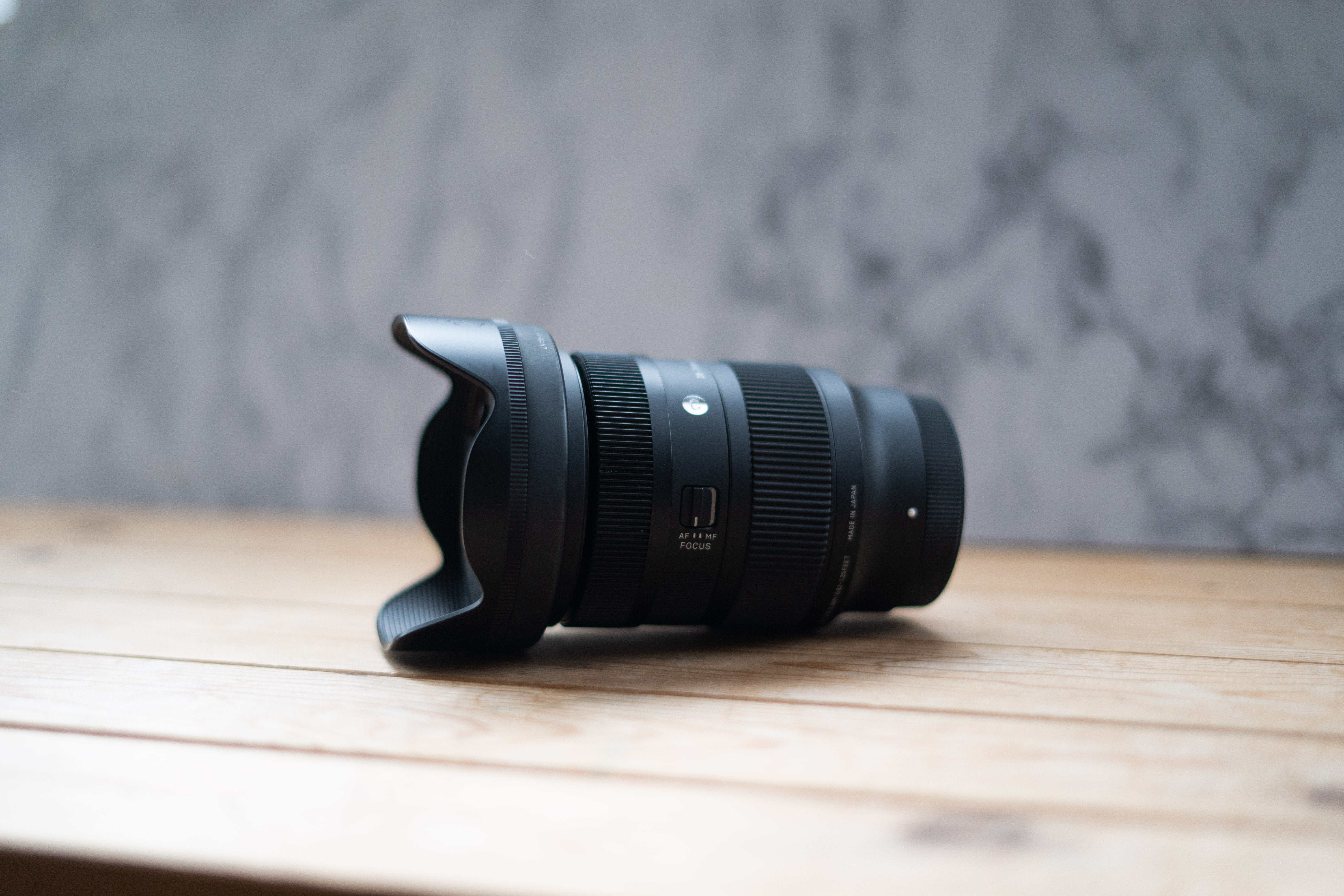
Sigma 28-70mm f/2.8 DG DN: Build and handling
Despite the lens casing being made of plastic, it doesn't feel cheap in the slightest. Both the zoom and focus mechanisms are smooth with just enough resistance so that you don't accidentally adjust them. The zoom ring goes from 28mm - 70mm in about a quarter of a turn, so you can really quickly pull focus from a subject far away to a subject close up.
Another benefit to the weight of this lens is that you can shoot for long periods of time without your wrist or arm aching, which is ideal if you predominantly want it for video.
The autofocus on the 28-70mm is accurate and responsive. There is a button on the side of the lens that you can use to flick between manual focus and auto. On the barrel of the lens, the most popular zoom ranges are clearly marked so you can quickly change between 28mm, 35mm, 50mm and 70mm.
The lens hood feels really secure when attached to the filter thread and, unlike other lenses, I've never accidentally knocked it off. It's also really smooth to attach, whereas some can be quite fiddly.
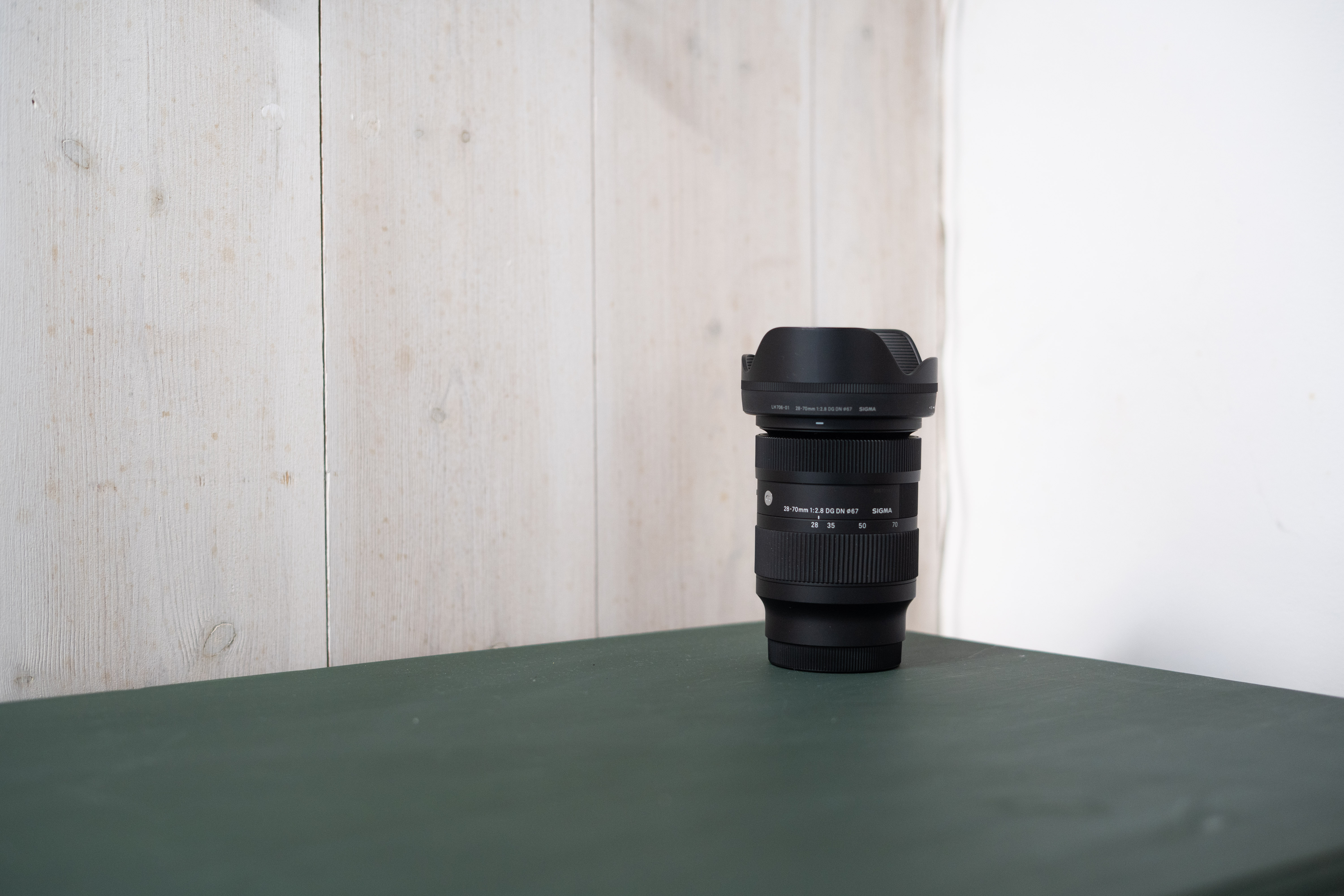
Sigma 28-70mm f/2.8 DG DN: Performance
Don't let the price and size of this lens fool you, because it really doesn't compromise too much on image quality. Granted, it's not quite as good as the 24-70mm G Master or even the Sigma 24-70mm, but for the price it's perfectly acceptable.
Photos are sharper in the middle and than they are at the corners, but if you're not looking for perfection you can save yourself a fair amount of money. There is some barrel distortion that you would expect from a zoom lens, but it's easy enough to correct in post-processing.
Ghosting and chromatic aberrations are minimal even when shooting directly into the sun. It does have a tendency to produce lens flares, but depending on your style of photography and what you're shooting this could be a blessing or a curse. As a portrait photographer, I personally quite like the effect as it adds a little something extra to my images.
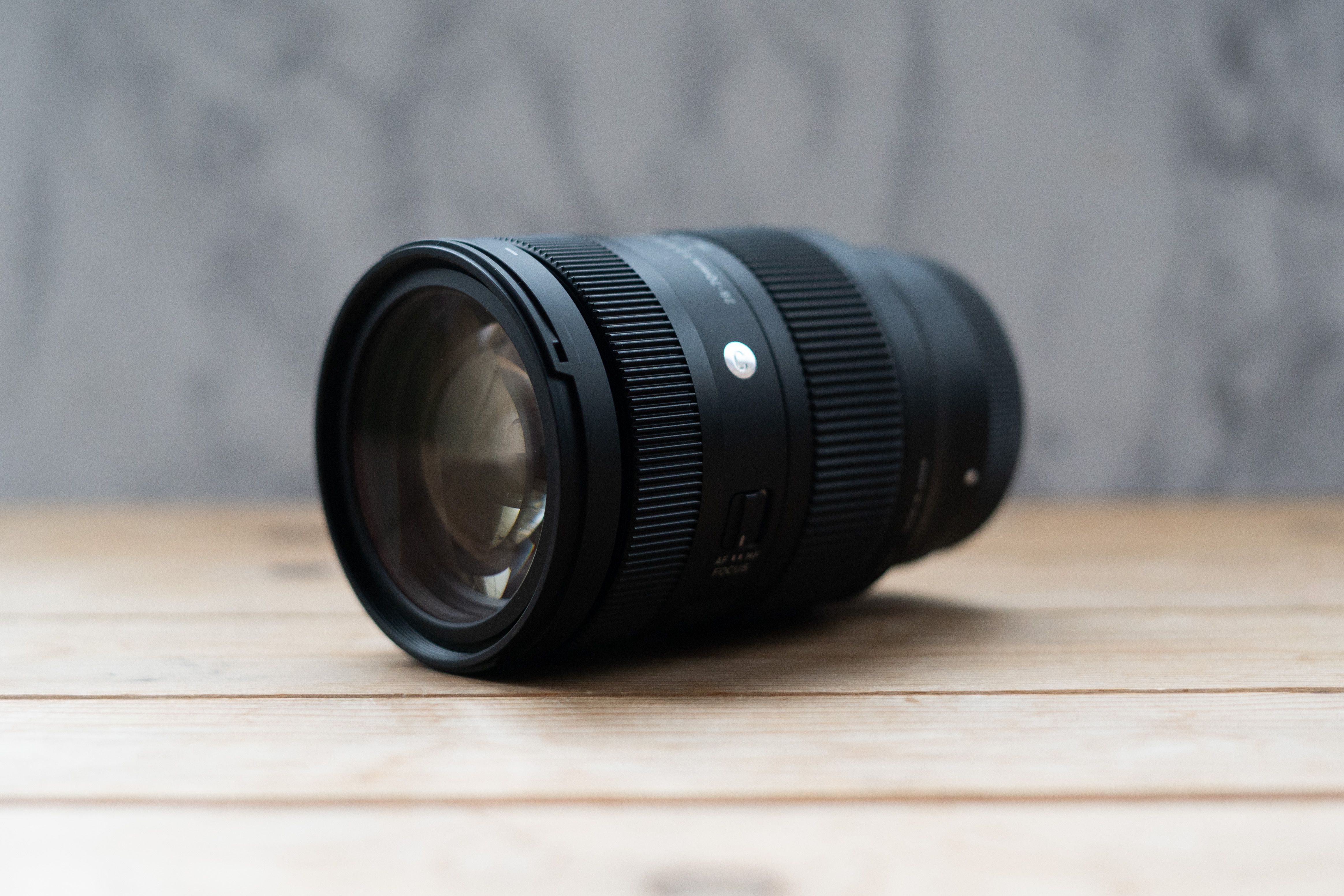
In the center, bokeh balls are almost perfectly round but as you creep out towards the edge of the images, it starts to distort slightly into more of an oval shape when shooting at f/2.8. It's noticeable but not distracting, so unless you're a bokeh connoisseur it's unlikely to bother you.
It's worth pointing out that when it comes to vignetting the Sony E mount version (which is the one we tested) doesn't have an automatic correction setting in Lightroom, but you can change it manually.
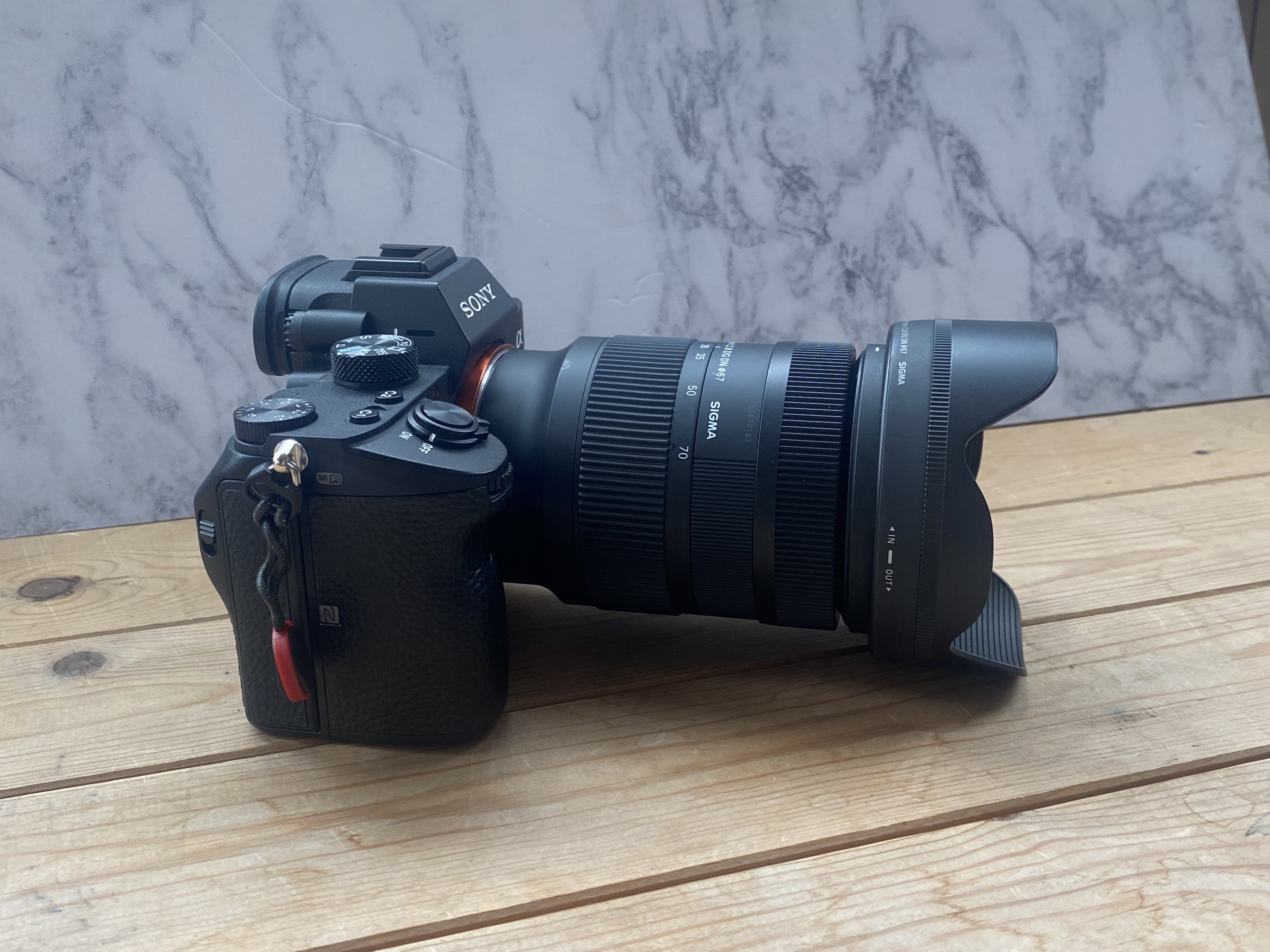
Sigma 28-70mm f/2.8 DG DN | C: Sample images


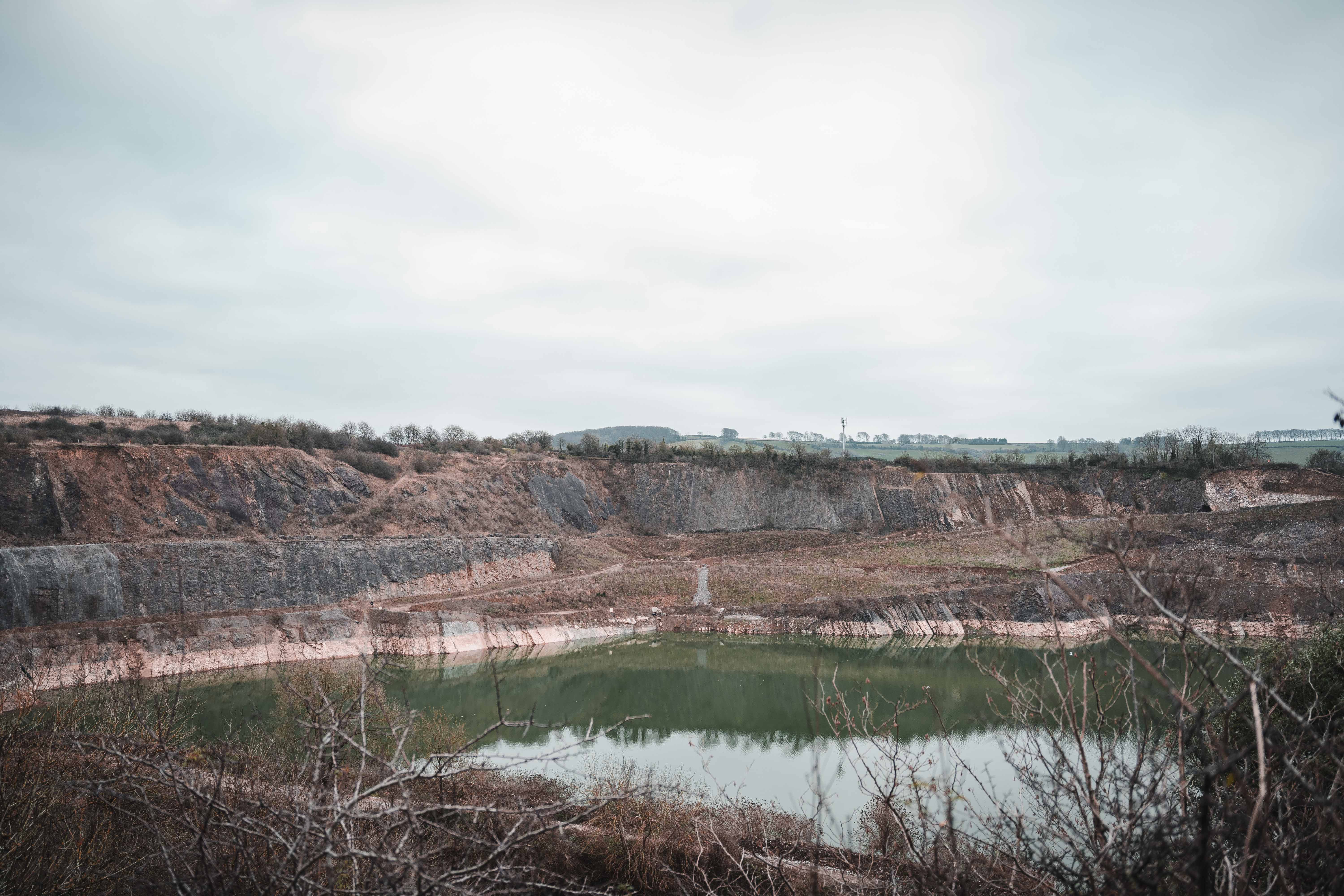


Sigma 28-70mm f/2.8 DG DN: Lab results
We run a range of lab tests under controlled conditions, using the Imatest Master testing suite. Photos of test charts are taken across the range of apertures and zooms (where available), then analyzed for sharpness, distortion and chromatic aberrations.
We use Imatest SFR (spatial frequency response) charts and analysis software to plot lens resolution at the center of the image frame, corners and mid-point distances, across the range of aperture settings and, with zoom lenses, at four different focal lengths. The tests also measure distortion and color fringing (chromatic aberration).
Sharpness:
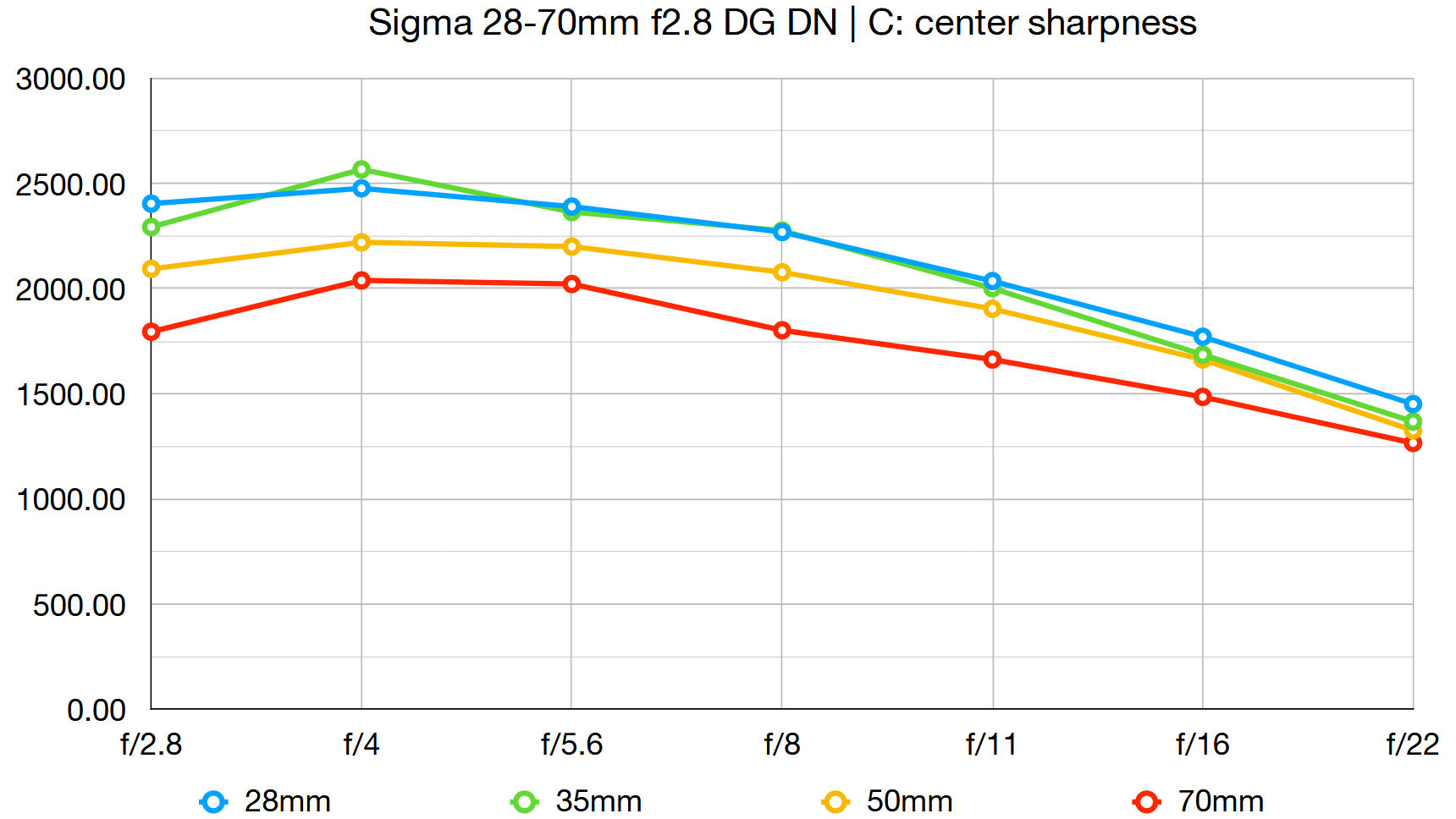
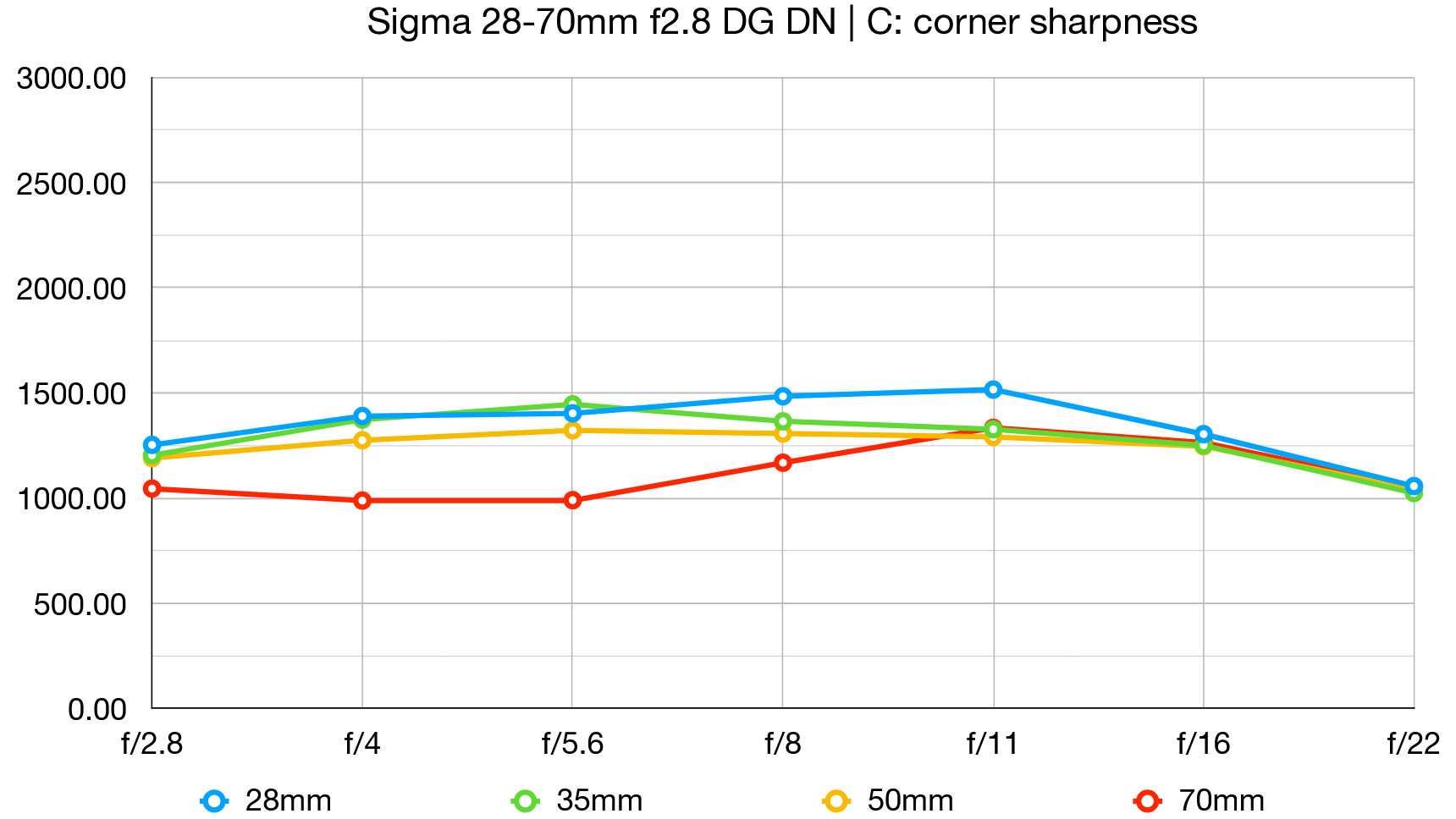
Center-frame sharpness is superb at shorter focal lengths, even wide open at f/2.8. Sharpness dips slilghtly as you head towards 70mm, though not by a noticable amouont.
Corner sharpness will always be lower than at the center but, even so, we'd expected a slightly better performance here, especially at 70mm where images are fairly soft at larger apertures.
Fringing:
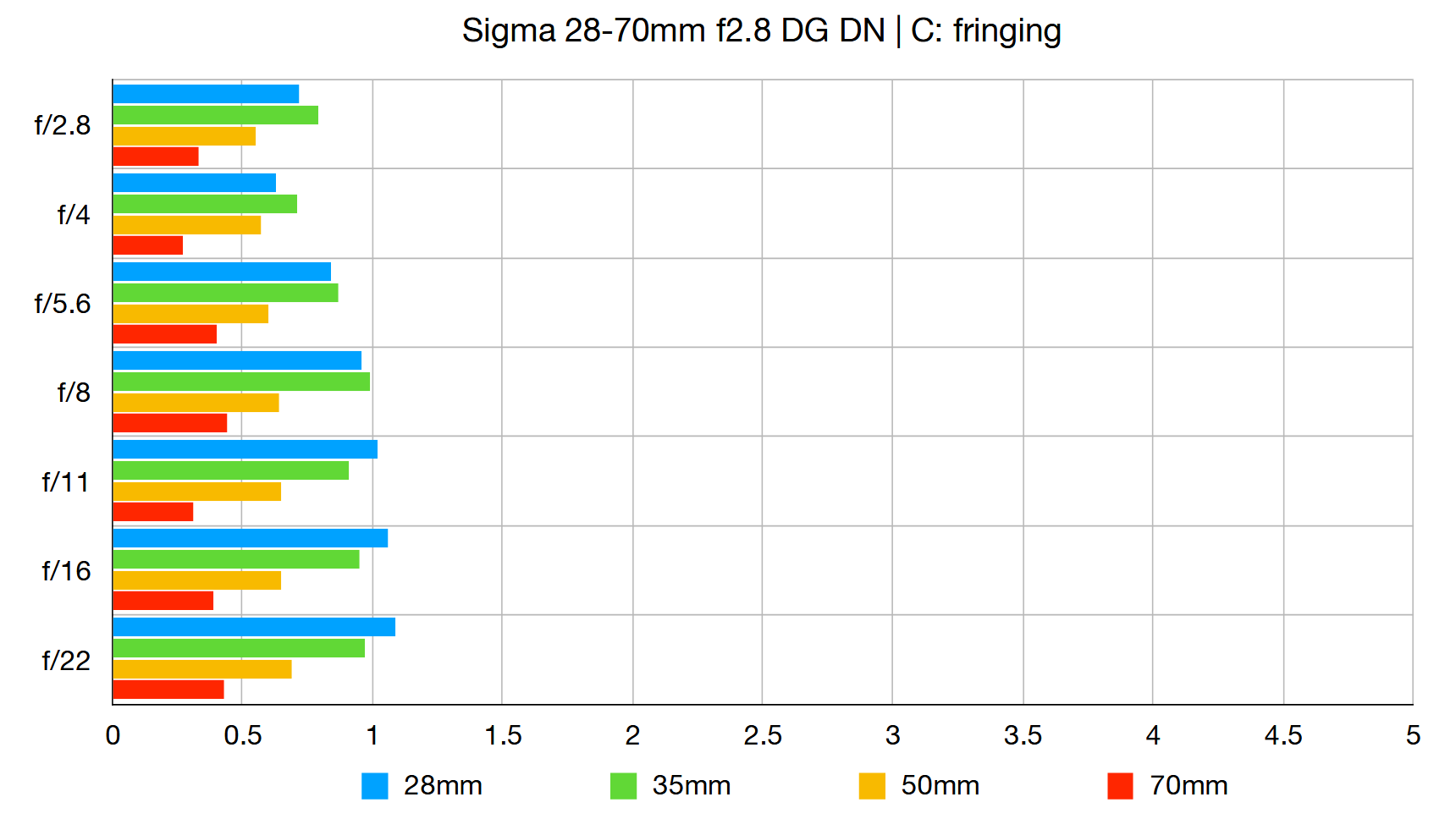
A little color fringing can be apparent towards the edges and corners of the image frame at shorter focal lengths of 28-35mm, though it reduces to unnoticeable levels once you zoom in to 50mm and beyond.
Distortion:
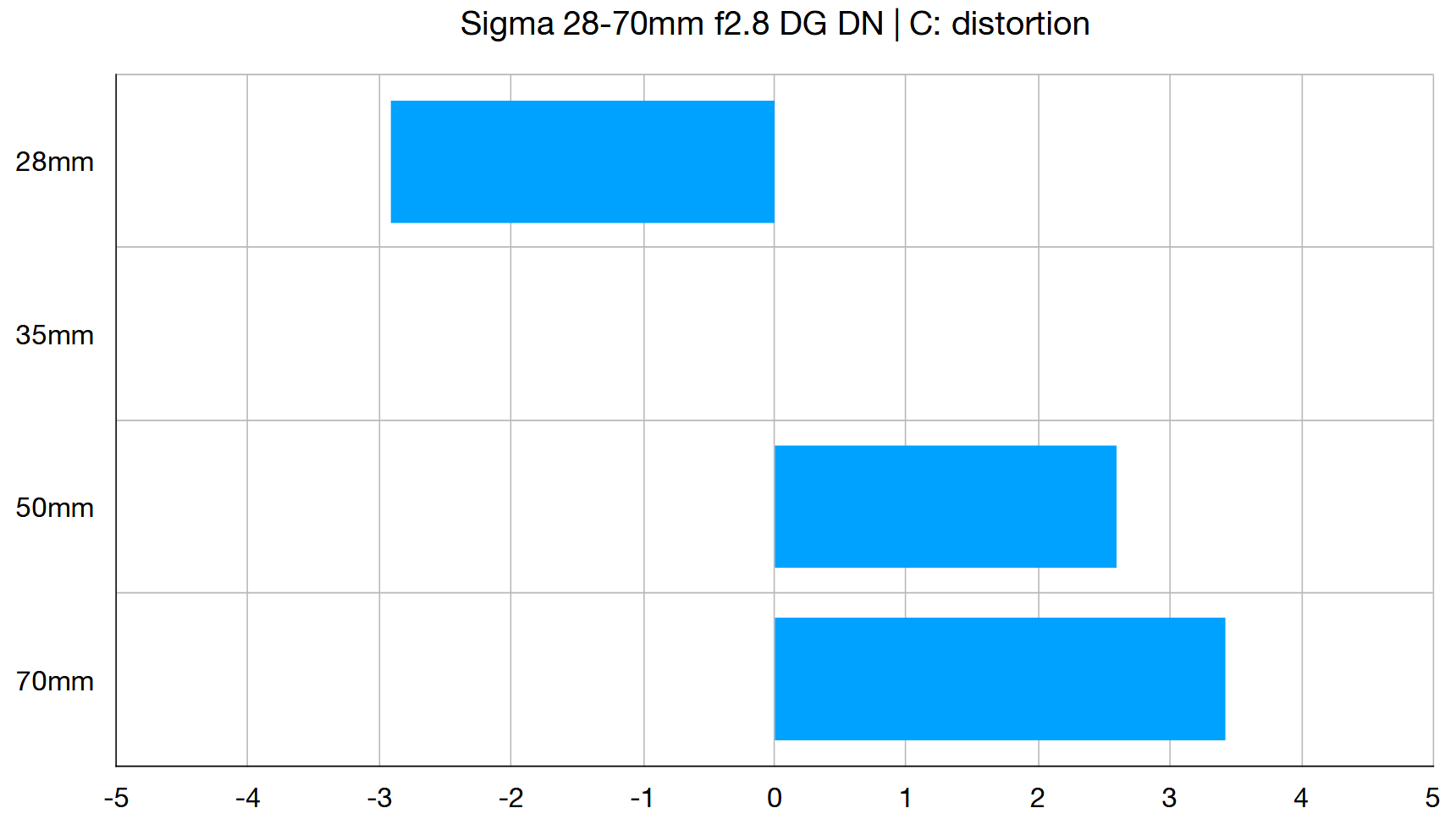
There's moderate barrel distortion at 28mm, though at 35mm distortion is completely eliminated. At 50mm and beyond, however, the lens transitions to produce moderate pincushion distortion.
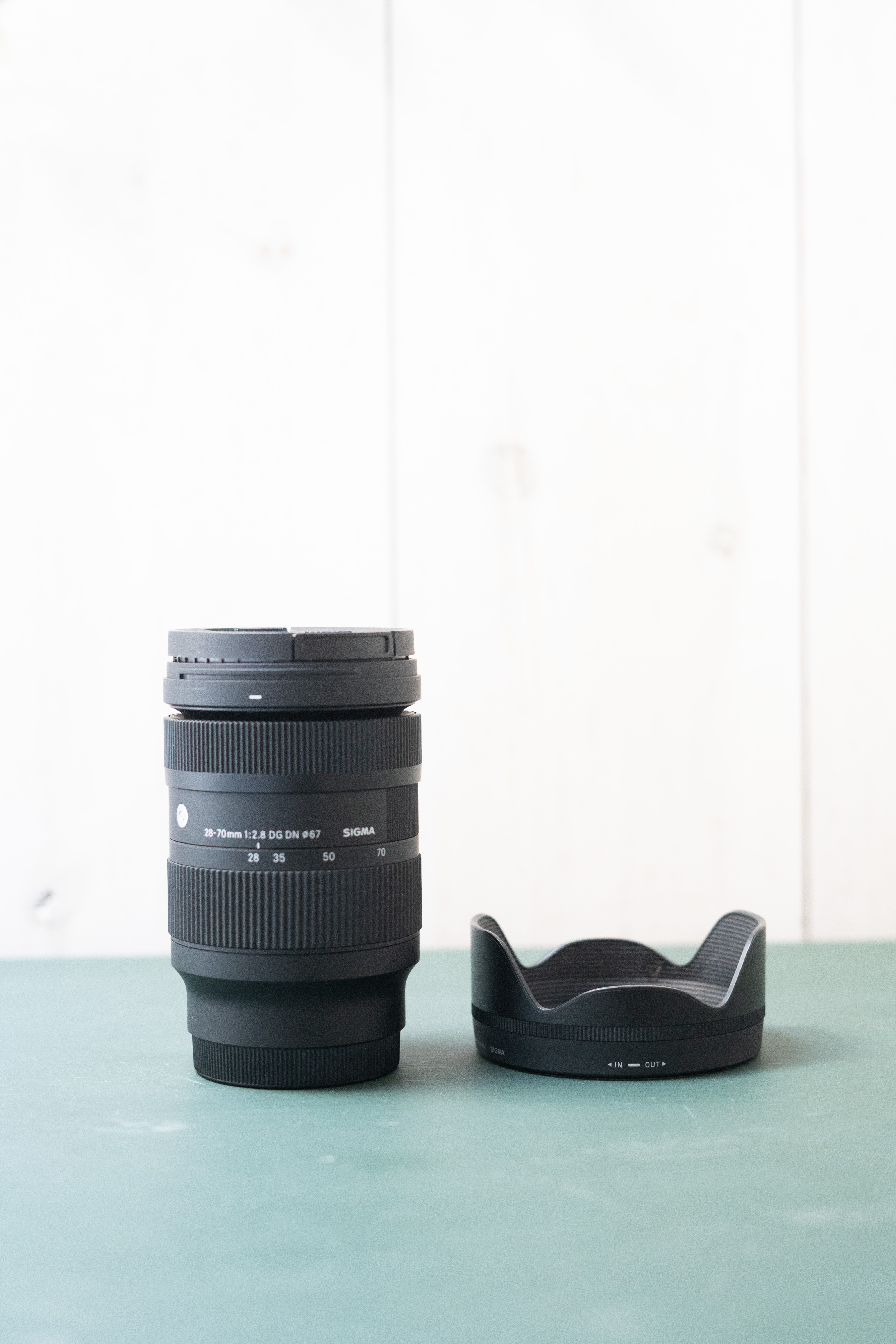
Sigma 28-70mm f/2.8 DG DN: Verdict
For anyone who's on a tight budget but still wants to own a standard zoom lens with a fast f/2.8 aperture, the Sigma 28-70mm f/2.8 DG DN is an ideal solution. It doesn't have the corner-to-corner sharpness of more expensive 24-70mm lenses but, where it lacks very slightly in image quality, it makes up for in size and weight.
Considering the price you still get a lot for your money; it benefits from fast and silent AF, due to a stepper motor assembly that drives a a single focusing element, and the aperture blades create beautiful sunstars. Overall, this is a brilliant lens at a really affordable price and would suit anyone who is willing to compromise slightly on performance in favor of portability.
Read more:

Having studied Journalism and Public Relations at the University of the West of England Hannah developed a love for photography through a module on photojournalism. She specializes in Portrait, Fashion and lifestyle photography but has more recently branched out in the world of stylized product photography. Hannah spent three years working at Wex Photo Video as a Senior Sales Assistant, using her experience and knowledge of cameras to help people buy the equipment that is right for them. With eight years experience working with studio lighting, Hannah has run many successful workshops teaching people how to use different lighting setups.

